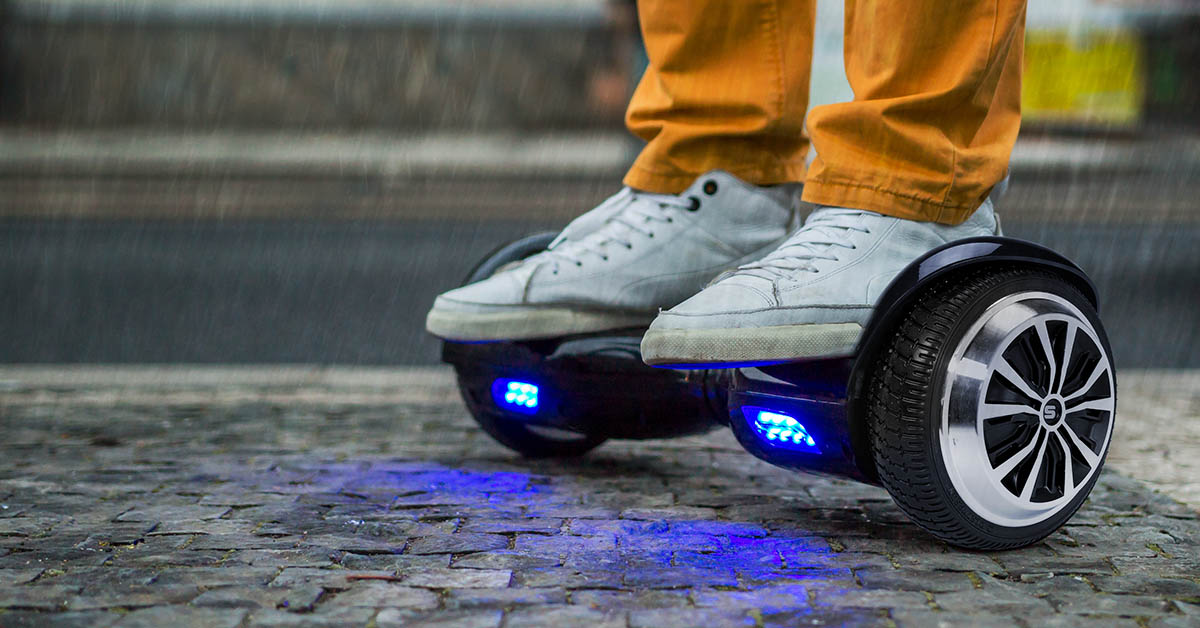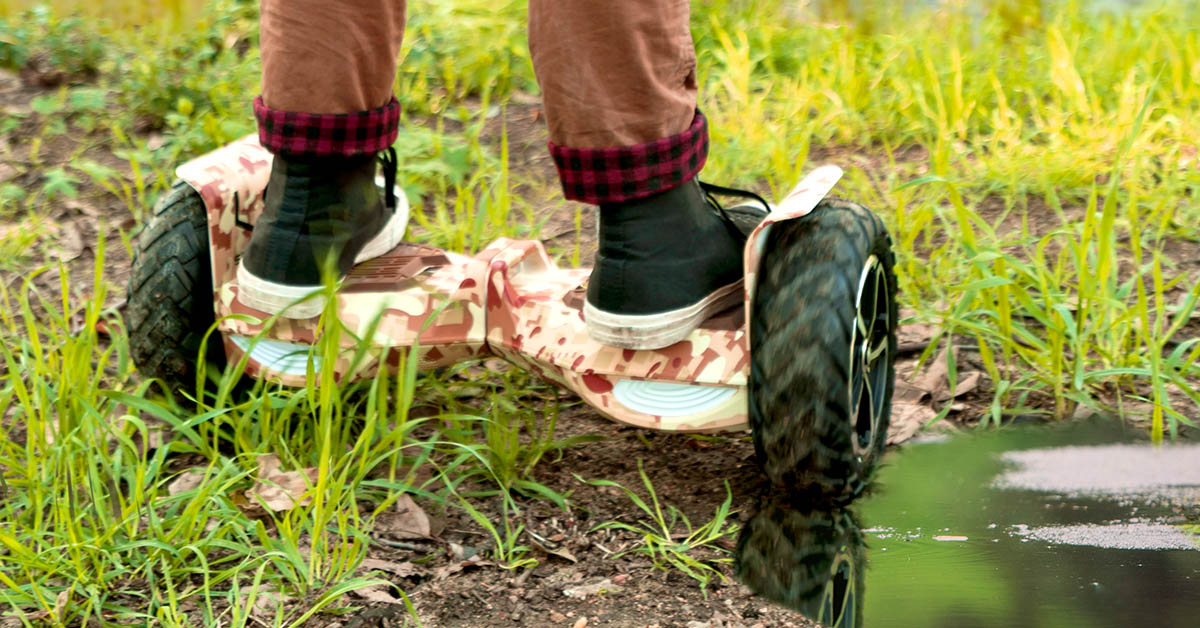
Hoverboards can take you a lot of places. Riders enjoy a lot of different styles and all sorts of features, bells, and whistles. Some of them, like the T6 Outlaw, can even handle a variety of terrains — from gravelly pavement to tall grass.
The one place your self-balancing board can’t go, is into the water. That doesn’t mean you have to run and hide inside at the first sign of drizzle or wrap your board in plastic like your Great-Aunt Carol’s couch. It does mean that you should avoid riding through puddles, don’t try to go riding in the rain, and don’t ramp it into your buddy’s pool . . . no matter how much the boys dare you to try.
Hover Board Electronics Don’t Like Water
Hoverboards are meant to be ridden. They aren’t made out of papier-mâché and they aren’t gremlins. Your self-balancing board isn’t going to melt or turn into a red-eyed monster and attack you if you leave it out in the rain. At least, we know ours won’t.
Gremlins aside, hover boards currently run on electricity and electric components still don’t like water. The motherboard and lithium-ion batteries that power your board are not designed to handle water. Which means if you drench your board, it will likely just stop working.
Many boards have some degree of water resistance (noted by the hoverboard’s IP rating) and can handle a light drizzle. Some can even survive being driven over a few small puddles — though we still recommend avoiding them. The risk is in exposing the electronics and the battery to water. However, even water-resistant boards aren’t designed to be submerged in water of any depth. Electric components and water just don’t mix and if your battery and/or motherboard suffer water damage, your board is in serious trouble.

Self-Balancing Boards + Wet Surfaces = A Dangerous Combination
Obviously, submerging your hover board is an absolute no-go, but what about riding through puddles to kick up a sick splash or hydroplaning across a wet parking lot? The answer is still a negative, Ghostrider.
Even all-terrain hoverboards with 10-inch tires designed for unpaved surfaces, like our Swagboard T6 Outlaw, are not recommended for use on wet surfaces. In addition to the risk of exposing the board’s inner workings to water, you can lose stability and traction on wet surfaces — and you’ll probably end up with both a ruined board and a wet backside. It’s not worth the risk.
My Hover Board Got Wet, Now What?
Accidents happen. Freak rainstorms pop up. Puddles appear out of nowhere. People don’t read instructions or FAQs on their new self-balancing board until it’s too late and they’ve already tried to ride it through their little brother’s kiddie pool (seriously, don’t do that).
Is all hope lost? Maybe not.
It depends on how wet your board got, how dirty the water was, and whether your board has any water resistance. Unfortunately, the steps for dealing with a wet hoverboard are not like those for dealing with a wet phone. You can’t fix the hoverboard by tossing it into a huge tub of rice and waiting for everything to dry out.
If your hoverboard gets wet:
- First things first: Turn. It. Off. Immediately.
- Contact the manufacturer. Also immediately.
Depending on how much water got into your hoverboard, it may still work after completely drying. However, if it doesn’t, it’s because, as we said before, hoverboard electronics don’t much like water.
You know what else doesn’t like water?

Most Manufacturer’s Warranties Don’t Like Water Either
Most electronics enjoy some form of limited warranty — from televisions and PC monitors, to smartphones and tablets. But even the most generous warranty from a manufacturer will have a clause against water damage.
Make sure you understand your product’s warranty (preferably before you purchase) and check to see if there is an extended warranty available. Extended warranties can come in many forms. They can either extend the time period of the warranty. Or they can extend the actual coverage to include scenarios not covered under the limited manufacturer’s warranty. This extension might include accidental damage, water damage — or both!
If your board still isn’t working, you’ll need to contact a certified repair professional who can assess the damage. You can contact the manufacturer of your hoverboard to see if they have authorized repair centers in your area. Repairing a water-damaged hoverboard will certainly require a few new parts, but it’s possible an authorized repair agent will have a better chance — not to mention better training and better tools — to get your hoverboard back up and running again.
The Bottom Line: Keep Your Hoverboard Dry
Amphibious hoverboards are likely to be developed before floating boards that we saw in Back 2 the Future Part II. Boards that can handle deep puddles or even take you through shallow water may well be on the horizon. But they’re not here just yet.
For the time being, the best way to keep your self-balancing board functional is to keep the board on dry land. Dry days and dry surfaces are best for getting the most out of your hoverboard.